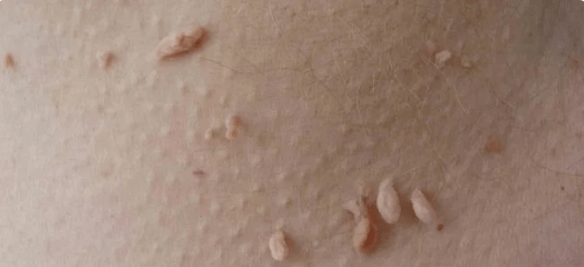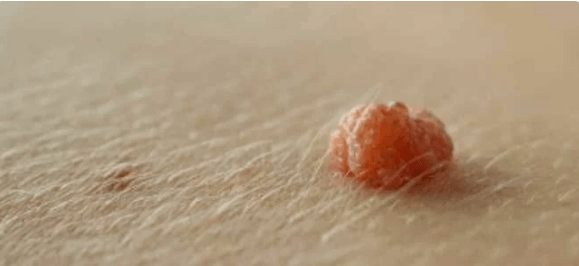
The Human Papilloma Virus (HPV) is the common name of a group of viruses that provoke various diseases.More than 100 species are known.Pathogen is common worldwide.In order to avoid infection, it is important to know how human papillomavirus is transmitted.
What is HPV infection?
HPV infection is a group of viral diseases provoked by papillomavirus.It is currently being tested and described over 100 types of virus.Scientists have been studying the morphology of the pathogen for a long time, which has made it possible to determine what types of viruses what pathologies they provoke.A high -risk HPV group was distributed separately.
Due to the fact that HPV is mostly impressed by the sexual system, gynecologists pay considerable attention to the study of the problem.Speaking of what HPV is in gynecology, it is necessary to note a high risk of developing oncology of the cervix.Experts find that this virus, more precisely, type 16 and 18th, cause the development of the oncological process in the female reproductive system.
HPV - Transmission and infection paths
The papillomavirus is known for its resistance to environmental factors, so it can long maintain activity in the external environment.This explains the ability of the pathogen to widespread.However, the transmission of HPV Airborne is not directly transmitted.Speaking of how the papilloma virus is transmitted from person to person, doctors indicate the mandatory presence of direct contact with the skin and mucous membranes of the viral carrier.
HPV transmission paths are varied:
- sexual;
- contact house;
- vertical.
The most common way to transmit HPV

After hearing about this type of pathogen, patients are often interested in the doctor: whether human papillomavirus is sexually transmitted.Doctors note that this method is the most common.According to statistics, about 70% of people leading an active sex life are carriers of the papilloma virus.In this case, the infection can occur repeatedly throughout life.
Most women and men have been infected by HPV for several months after the start of active sexual activity.It is worth noting that HPV is often attributed to sexually transmitted infections, but infection is possible in sex without penetration.Contact with the genitals of the virus carrier can lead to infection.
Doctors also call the following ways of HPV infection:
- with kiss;
- With oral sex.
HPV - methods of infection in everyday life
Some specialists in infectious diseases distinguish the internal path of HPV transmission.The percentage of spread of the virus is small in this way, but this possibility cannot be completely excluded.The virus can maintain activity for some time, enter the pool, bath, so the infection is possible in common parts.
The infection in everyday life occurs with kisses, the use of personal hygiene products of the affected HPV.In such cases, the risk of infection is increased:
- Weakening of immunity;
- Violation of personal hygiene rules.
The risk of HPV infection
The likelihood of HPV infection increases sharply with the onset of sexual activity.This time of transmission is considered basic.At the same time, experts distinguish a number of factors, the presence of which several times increases the risk of infection:
- Early onset of sexual activity;
- frequent change of sexual partners;
- Ignoring contraceptives.
Separately, it is necessary to say the possibility of infection in childhood.In most cases, HPV is transmitted to the child from the mother during birth.When it rises along the birth canal, an infection of the baby occurs.Children tolerate the infection easier, it does not actually show it.In addition, thanks to the preparation of finished antibodies, spontaneous treatment is observed with breast milk.
How is HPV infection?
HPV infection occurs with direct contact of the mucous membranes, the skin of the genitals.During sexual intercourse, micro -cracks and mucosal damage often occur, which only increases the risk of HPV infection.At the same time, there are some differences in the mechanisms of transmission of the virus to women and men.
How is human papillomavirus transmitted to men?

The likelihood of HPV infection in men directly depends on the number of permanent sexual partners.Frequent accidental sexual contact increases the likelihood of infection several times.At the same time, the man himself does not suspect the presence of HPV virus in the body.As a result, the virus is further spread.In 90% of cases of sexual relations, an infection of a partner occurs, which was previously absolutely healthy.
How is the human papillomavirus transmitted to the woman?
Ways to infection in women are no different from those characteristic of men.First of all, it's sexual.However, some factors increase the risk of infection in women.
Among them, gynecologists identify:
- Early onset of sexual activity;
- frequent change of sexual partners;
- abortion;
- History of traumatic birth;
- gynecological diseases;
- stress;
- Long -term administration of oral contraceptives.
Is the child's human papillomavirus transmitted?
Knowing the presence of HPV in the body, women who plan pregnancy in the near future wonder whether the human papillomavirus from the mother is passed on to the baby.Experts say there is a risk of infection of the child.However, in children, HPV is rarely observed, the methods of infection differ from those in adults.The transmission of the infection is more frequent at the stage of progress of the fetus by the birth canal: the virus from the mucous membrane of the mother passes to the baby.
It is worth noting that the danger of such an infection is low.In most cases, the baby's body manages to get rid of HPV for the first 2-3 months of life.This happens thanks to the intake of antibodies to the baby's body, along with breast milk.The main danger of HPV for babies is to damage the airways - the appearance of polyps.Such cases are rare and are considered more exceptions.
HPV - How much does it occur after infection?
After learning how to transmit human papillomavirus, many patients are interested in the conditions of manifestation of the first symptoms.Doctors cannot unequivocally say how quickly it manifests after HPV infection.
The following factors are determined:
- Patient age;
- The presence of chronic inflammatory processes in the body;
- The state of the immune system.
In practice, the conditions of the clinical manifestation of HPV are different.Conditioning, changes in the affected cells can be observed in a few weeks and after months.In some cases, the first lesions on the skin in the groin and genitals are found a year after the papillomavirus enters the body.It is possible to determine the exact time of HPV in the body based on laboratory tests.
Signs of HPV infection
Symptoms of HPV infection are manifested by the lesion of the genitals.In most cases, the virus leads to characteristic skin lesions.Patients record the appearance of vulgar papillomas and pointed warts.Externally, these outgrowths look like cauliflower, so it's hard to confuse them with other skin manifestations.
Women are localized pale pink pale pink outgrowths:
- in small pubic lips;
- in the groin;
- the clitoris;
- near the outer hole of the urethra;
- On the eve of the vagina.
In some cases, the warts are formed in the anus if the woman practices anal sex.The strong growth of such entities leads to the appearance of bloody discharge, the sensations of pain during intercourse.In men, such entities are localized in the area of pubis, perineum, rarely on the surface of the penis.
HPV vaccinations after infection
Even those who know how to transmit human papillomavirus, they are not always able to avoid infection.Following treatment to eliminate HPV re -infection to prevent recurrence, doctors are vaccinated against papillomavirus.Vaccinations prevent the development of a viral infection for 15 years or more.















